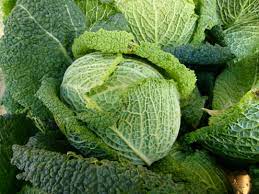
Firstly, introducing Auscrops, a high-tech market vending company bridging farmers and customers together through market vendors. Click here to find out more about How Cabbage Is Planted as well fruit and vegetable offers.
How Cabbage Is Planted
One of the most rewarding things a gardener can do is coax life from a tiny seed. Let’s delve into the process of sowing and growing cabbage, a leafy delight that’s a staple in many cuisines worldwide.
It Starts with a Seed
To kickstart the journey, the initial step involves acquiring high-quality seeds from a reliable source. When deciding on the type to plant, consider factors such as your local climate, space availability, and personal taste preferences.
Creating Ideal Conditions: Prepping the Soil
Moving onto soil preparation, this leafy vegetable favors a well-draining, fertile soil. Incorporating organic matter, such as compost or aged manure, can enrich the soil quality. Additionally, maintaining a soil pH between 6.0 and 6.5 can enhance nutrient availability and improve plant health.
Taking the Indoor Start: Sowing Seeds
Now, let’s focus on the sowing process. Ideally, seeds should be started indoors, about 6 weeks before the last expected frost. Using a seed tray or pots filled with a seed starting mix, plant the seeds 1/4 to 1/2 inch deep.
Transplanting Outdoors: Moving to the Big World
Upon reaching a growth stage of 2-3 inches tall, with a couple of true leaves formed, the seedlings ready to introduce to their outdoor home. Transplanting should done in rows, with each seedling spaced 12-24 inches apart.
Regular Maintenance: Ensuring Growth
Post-transplant, the seedlings will require consistent care. Regular watering, balanced fertilization, and diligent pest management form the backbone of this nurturing stage.
The Grand Finale: Harvesting
Finally, the culmination of the process arrives with harvesting. This usually happens when the heads reach an optimal size and firmness, approximately 70-100 days after transplanting.
In conclusion, planting cabbage, or any vegetable for that matter, requires time, patience, and an understanding of the plant’s unique needs. The process can be immensely gratifying, rewarding us with fresh, home-grown produce that carries the satisfaction of a job well done. Gardening is an art that celebrates the miracles of nature, and indeed, the journey of a tiny seed to a full-grown plant is nothing short of a miracle.
Click here to read similar articles.
 Français
Français 











